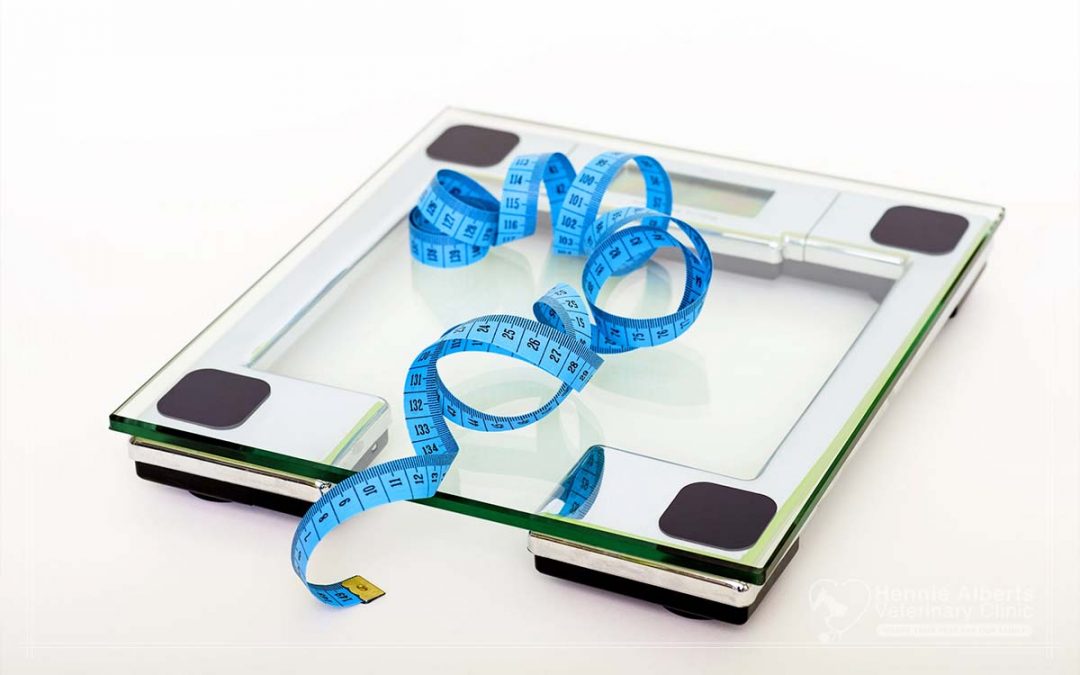Do you know you may be literally killing your pet with kindness? The extra treats and the resulting extra weight are causing lasting damage to your pet’s internal organs, bones, and joints. The longer the excess weight is on the body, the more severe the damage to the body will be.
To do a check on your pet, feel around its midsection while your pet is standing. The ribs and spine should be easy to feel and, on most pets, there should be a tucked in, or slight hourglass, shape to the waist. If you cannot easily feel your dog or cat’s ribs or spine, and the tucked-in waist has thickened considerably enough to give the animal a more tubular shape, it is time for you to consult with your veterinarian about a weight loss regimen for your pet.
Some of the conditions that can occur as a result of excess weight are exercise intolerance and decreased stamina; respiratory compromise (breathing difficulty); heat intolerance; hypertension (high blood pressure); diabetes or insulin resistance; liver disease or dysfunction; osteoarthritis (lameness); increased surgical/anaesthetic risk; lowered immune system function; and increased risk of developing malignant tumours (cancer).
Talk to your veterinarian about a good reduced-calorie food and exercise plan that will specifically benefit your pet’s age, weight, and breed, and you will be on your way to getting your pet on the road to recovery before it is too late. It has been clinically proven that weight loss can add two years to your pet’s life. What better motivation than that?
There are numerous incredible weight loss foods on the market, such as Hills Metabolic, Royal Canin Weight Control / Obesity Management, and Vet’s Choice Lite to name a few. Just like us, getting your pet’s weight down consists of increasing exercise and reducing calories. What’s easier than feeding an already prepared meal especially catered for weight loss?
The first step is to know what your pet should weigh. Bring them in and we’ll help you with this. Then feed them according to the feeding guidelines on the bag, for their goal weight, not their current weight. This is not a quick fix and takes dedication and persistence, but once you see your pet living a more comfortable life, what better reward is there?

